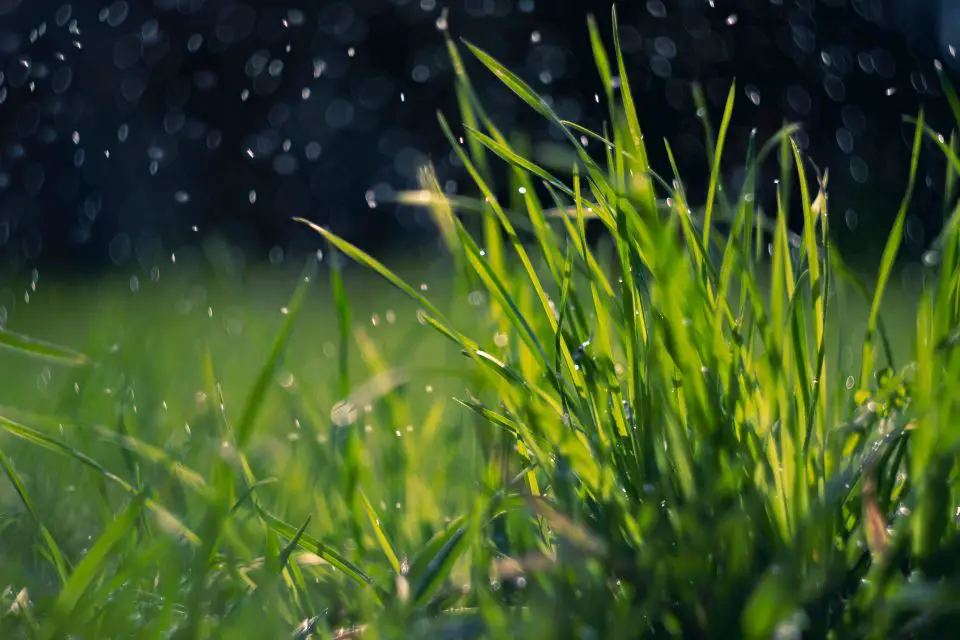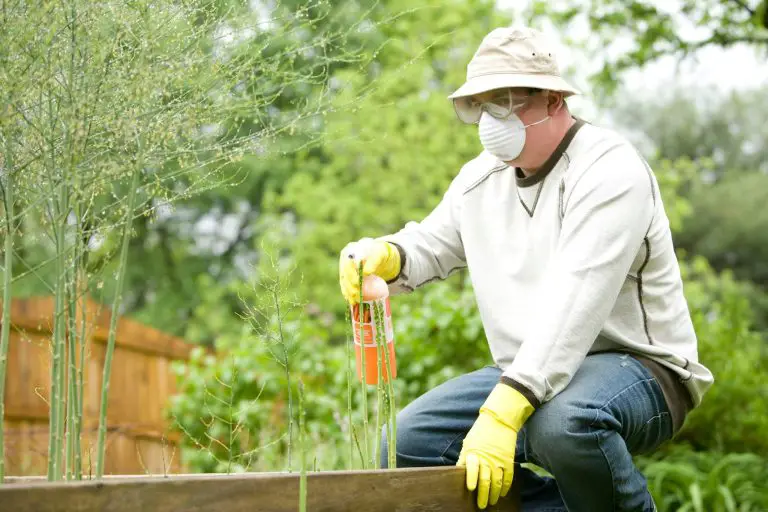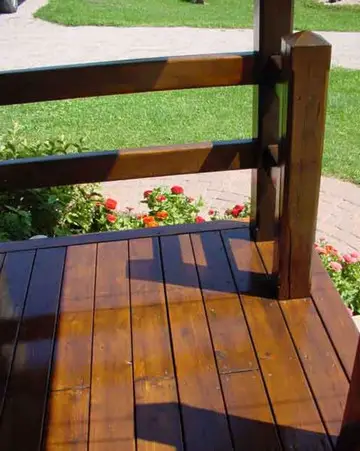A lush, green lawn is the pride of any homeowner, enhancing curb appeal and providing a beautiful outdoor space for relaxation and activities. Maintaining a healthy yard requires more than just occasional mowing. Proper lawn care involves soil preparation, regular maintenance, and the right balance of watering, fertilization, and weed control. By following a few simple steps, you can achieve a vibrant, thriving lawn that remains green and healthy throughout the year.

Preparing the Soil for a Healthy Lawn
The foundation of any great lawn starts with healthy soil. Before planting grass or treating an existing lawn, it’s important to assess the condition of the soil. Testing the soil’s pH level and nutrient content helps determine what amendments may be needed.
Most grass varieties thrive in soil with a pH between 6.0 and 7.0. If the soil is too acidic (pH number too low), applying lime can help balance it. Adding sulfur can reduce alkalinity. (lower the pH number). Compacted soil prevents proper root growth and water absorption. Aerating the lawn once or twice a year helps loosen the soil, allowing air, water, and nutrients to reach the roots.
Adding organic matter, such as compost or aged manure, improves soil texture and fertility. A nutrient-rich base supports strong grass growth, making the lawn more resilient to environmental stressors.
Controlling Weeds and Preventing Lawn Damage
Weeds compete with grass for nutrients, water, and sunlight, weakening your lawn’s overall health. Preventing weed growth is an important part of lawn care, requiring a combination of proactive maintenance and targeted treatments. Look into weed control service options to find professional solutions that help keep invasive plants at bay. Many lawn care specialists offer pre-emergent and post-emergent weed control treatments that target different stages of weed growth. Pre-emergent herbicides prevent weeds from sprouting, while post-emergent treatments eliminate existing weeds before they spread.
Regular mowing at the appropriate height discourages weed growth. Keeping grass slightly taller shades out weed seedlings and promotes deeper root development, making the lawn more resistant to weeds. Overseeding bare patches in the yard prevents weeds from taking hold in open spaces.
Hand-pulling weeds is another effective method for small areas, but it’s important to remove the entire root system to prevent regrowth. By staying vigilant and addressing weeds early, homeowners can maintain a thick, healthy lawn that naturally resists invasive plants.
Watering Smart for Maximum Lawn Health
Proper watering is crucial for maintaining a green and thriving yard. Both overwatering and underwatering can lead to lawn problems, including shallow root systems, disease, and dry patches. Understanding the best watering practices ensures the lawn receives adequate moisture without waste.
Most lawns require about one inch of water per week, including rainfall. The best time to water is in the early morning, typically between 6 AM and 10 AM, allowing the grass to absorb moisture before the sun evaporates it. Watering in the evening should be avoided, as excess moisture can promote fungal growth and lawn disease.
Deep, infrequent watering encourages roots to grow deeper into the soil, making grass more drought-resistant. Light, frequent watering results in shallow root development, making the lawn more susceptible to heat stress and dry conditions. Using a rain gauge or moisture meter helps track water levels to ensure the lawn is receiving the right amount.
Installing an irrigation system or using soaker hoses can provide even water distribution, reducing runoff and water waste. Smart irrigation controllers can be programmed to adjust watering schedules based on weather conditions, ensuring optimal hydration for the lawn.
Fertilizing for Nutrient-Rich Grass Growth
Fertilization plays a key role in providing nutrients that promote healthy grass growth. The right type of fertilizer depends on the grass variety, soil condition, and seasonal needs.
A balanced fertilizer containing nitrogen (N), phosphorus (P), and potassium (K) supports overall lawn health. Nitrogen promotes vibrant green color and leaf growth, phosphorus aids in root development, and potassium enhances disease resistance and stress tolerance. Many lawn care products display these nutrient ratios (N-P-K) on their packaging, helping homeowners select the right mix for their needs.
Applying fertilizer at the correct time ensures maximum effectiveness. Cool-season grasses, such as fescue and bluegrass, benefit from fertilization in early spring and fall, while warm-season grasses, like Bermuda and St. Augustine, thrive with fertilization in late spring and summer.
Slow-release fertilizers provide steady nutrients over time, reducing the risk of over-fertilization, which can burn grass and cause uneven growth. Organic options, such as compost, fish emulsion, and seaweed extracts, provide a natural way to enrich soil without synthetic chemicals.
Mowing Techniques for a Healthier Lawn
Mowing is one of the simplest yet most important lawn care practices. Using proper mowing techniques enhances grass health, prevents weed growth, and contributes to a uniform, well-maintained appearance.
Setting the mower blade to the correct height is key to promoting healthy grass. Cutting grass too short weakens the root system, making it more vulnerable to drought, disease, and weed invasion. Most lawns thrive at a height of 2.5 to 4 inches, depending on the grass type.
Frequent mowing prevents excessive stress on the grass. Instead of cutting off large amounts at once, follow the “one-third rule,” which means never removing more than one-third of the grass height in a single mowing session. This encourages strong root development and prevents shock.
Keeping mower blades sharp ensures clean cuts, reducing the risk of torn grass blades that are more susceptible to disease. Mulching grass clippings instead of bagging them can return valuable nutrients to the soil, acting as a natural fertilizer.
Seasonal Lawn Care Maintenance
Lawn care needs change with the seasons, requiring different strategies to maintain optimal health year-round. In spring, dethatching and aeration help rejuvenate the lawn after winter dormancy. This is the best time to apply pre-emergent weed control and fertilize cool-season grasses.
During summer, maintaining a consistent watering schedule and monitoring for pests or diseases keeps the lawn healthy during hot weather. Raising the mowing height slightly helps retain moisture and shade out weeds.
Fall is an ideal time for overseeding bare patches, aerating compacted soil, and fertilizing to prepare the lawn for winter. Raking leaves regularly prevents suffocation and fungal growth.
Winter lawn care primarily involves protecting dormant grass by minimizing foot traffic and ensuring proper drainage to prevent waterlogging. For areas with mild winters, occasional watering may still be necessary during dry periods.

A beautiful, green lawn requires consistent care, proper techniques, and attention to seasonal changes. By preparing the soil, managing weeds, watering efficiently, fertilizing appropriately, and following the right mowing practices, homeowners can achieve a thriving yard that enhances their property’s appeal.
Taking the time to develop a lawn care routine ensures long-term success and reduces the need for costly interventions. Whether tackling lawn maintenance independently or seeking professional assistance, following these simple steps will lead to a greener, healthier outdoor space that can be enjoyed for years to come.












